Making a Wooden Clockworks
Part two: Getting things ticking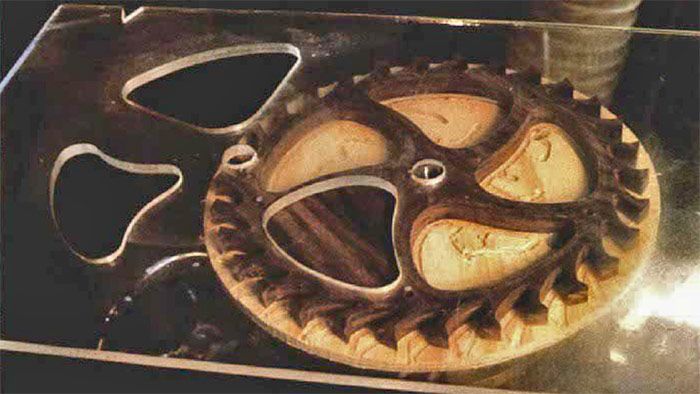
Synopsis: Wayne Westphale talks about how to make a clock. There are a variety of methods, covering a broad range of accuracy, speed, and expense; the method you choose will depend on your goal, your shop equipment, and your budget. After you’ve prepared your gear blanks, Westphale explains how to cut the wheel teeth, index the blanks, rough out the gullets, and make arbors and bearings. He lightens the wheels with a number of spoke configurations and balances the wheels. He explains how to support the clockworks by two outside plates and mount them, and how to adjust the clock to get accurate time. Multiple detailed, color drawings illustrate the complicated clockworks he’s guiding you to build. A side article by Jim Cummins talks about making a clock without the clock-specific tools that Wayne Westphale uses.
In part 1 (Designing Wooden Clockworks) we discussed the theory of how a clock works. Now is the time to make one. There are a variety of ways to cut gear teeth, methods that cover a broad range of accuracy, speed and expense. The method you choose will depend on your goal, your shop equipment, and your budget.
As an example of how low-tech clockmaking can be, for my first clock I turned the arbors on a lathe setup that consisted of an electric drill (as a headstock) clamped to a 2×4 (the lathe bed). A piece of angle iron, drilled and tapped to carry a pointed bolt, became a tailstock. A chisel served as a lathe tool and a piece of scrap as a tool rest. My first tooth cutters were reground spade bits, as shown in the bottom right photo on the facing page. Needless to say, this was doing it the hard way.
I’ve always tried to surpass each clock I’ve built with a better one, and along the way I’ve invested in some pretty sophisticated equipment—machines more often found in a metalworking shop. These are not essential to building a good clock, but they allow me, as a matter of routine, to achieve repeatable accuracy with little fuss. Expect this clock to tax your ingenuity in getting the necessary precision from your own machines and tools. There are ways around every problem as long as you understand the features in a clock that are critical to its operation.
Horologists don’t speak of gears, but of wheels and pinions. Wheels, the large gears, have teeth; pinions, the small gears, have leaves. I cut teeth and leaves on two different machines, but the process is basically the same—I use a set of reground router bits to cut the gullets between the teeth.
The preparatory step, laminating plywood gear blanks, was described in part 1. The photos on the facing page show some of the actual cutting, including my jig for bandsawing circles. To cut the wheel teeth, I mount a stack of gear blanks on a mandrel and mount the mandrel on an old metal lathe, which I also use to turn clock arbors. The tool-bit holder on the lathe’s cross-slide and compound has been adapted to carry a router, with the router bit perpendicular to the lathe centerline. By cranking one of the lathe’s control wheels, the router bit can be positioned closer to or farther from the work, then locked in position to give a cut at a set depth. By means of another control wheel the router can be moved precisely along the length of the work.
The first step in cutting the teeth is to turn the lathe on at slow speed, then use an end mill or hinge-mortising bit in the router to trim the blanks to true round, sizing them to the correct diameter at the same time. This ensures that the arbor hole will be exactly centered.
From Fine Woodworking #57
For the full article, download the PDF below:
Fine Woodworking Recommended Products

Suizan Japanese Pull Saw
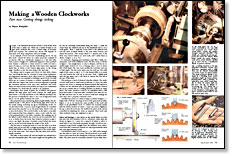









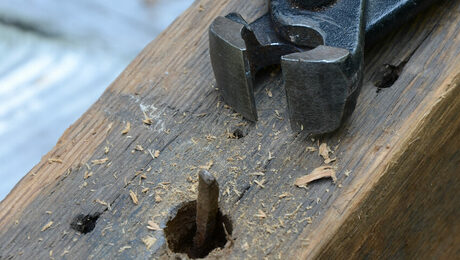
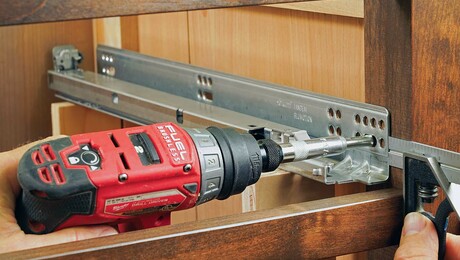

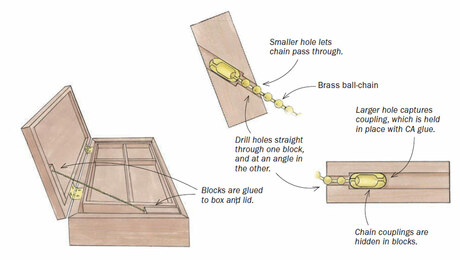








Comments
Where is Part one???
I was wondering too and looked it up. It is in the jan/feb 1986 issue 56 and is titled Designing Wooden Clockworks. Because of the name change for the article it didn’t come up with a normal search of the magazine but I found it by looking up the previous issue and there it is. Enjoy.
Log in or create an account to post a comment.
Sign up Log in